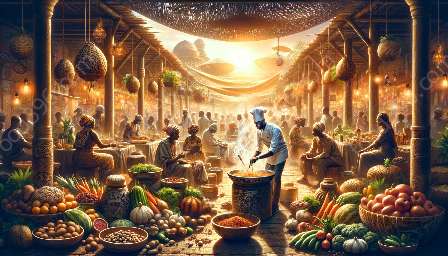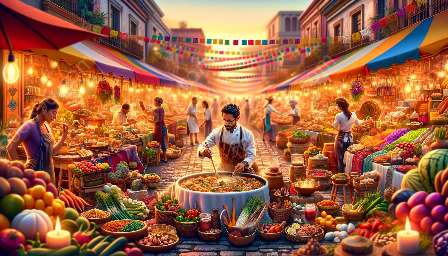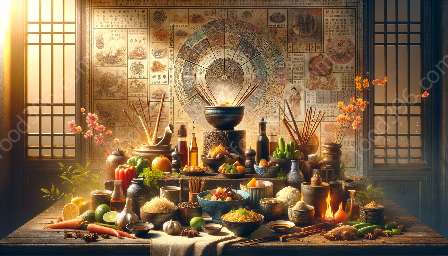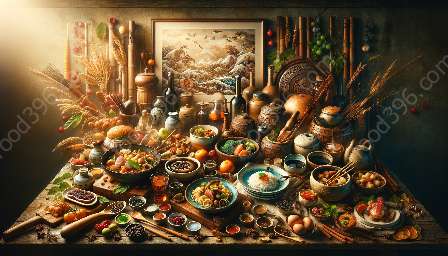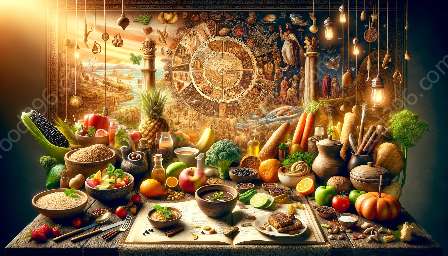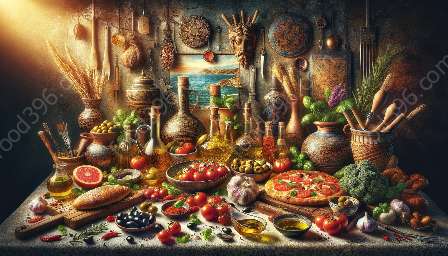Thai cuisine is renowned for its bold flavors, aromatic spices, and vibrant colors. The rich history of Thai cuisine has evolved over centuries, blending indigenous ingredients, flavors, and cooking techniques influenced by various cultural and historical factors.
Thai culinary tradition is deeply rooted in its local culture and influenced by historical events, migration patterns, and trade routes. Understanding the history of Thai cuisine provides insights into the diverse influences that have shaped Thailand's culinary heritage.
The Origins of Thai Cuisine
Thai cuisine finds its origins in the rich and diverse agricultural resources of Thailand. The fertile land, abundant forests, and coastal waters have provided the Thai people with a varied array of ingredients, including rice, vegetables, fruits, seafood, and spices.
The indigenous culinary practices of Thailand, which date back to ancient times, focused on balancing the core flavors of sweet, sour, salty, and spicy. Fish sauce, lime, chili, and herbs played a significant role in early Thai cooking, laying the foundation for the distinct flavors that define Thai cuisine.
Influences and Historical Factors
Thai cuisine has been shaped by diverse influences, including regional geography, cultural interactions, and foreign trade. Historical interactions with neighboring countries, such as China, India, and Laos, have contributed to the rich tapestry of flavors and cooking techniques found in Thai dishes.
The spread of Buddhism to Thailand also exerted a significant influence on culinary practices, introducing meatless cooking and vegetarian dishes. The blending of indigenous Thai ingredients with ingredients and culinary styles from foreign cultures resulted in the emergence of unique and complex flavor profiles that characterize Thai cuisine.
Key Ingredients and Culinary Techniques
Thai cuisine is celebrated for its use of fresh herbs, aromatic spices, and a harmonious balance of flavors. Key ingredients such as lemongrass, galangal, kaffir lime leaves, and Thai basil are fundamental to creating authentic Thai dishes.
Culinary techniques such as stir-frying, steaming, and grilling are commonly employed in Thai cooking, with a focus on preserving the natural flavors and textures of the ingredients. The artful combination of these ingredients and techniques has resulted in the creation of iconic Thai dishes known for their complexity and depth of flavor.
Regional Diversity and Culinary Traditions
Thailand's diverse regional landscapes have given rise to distinct culinary traditions, with each region showcasing unique ingredients and cooking styles. The northern region, for example, is known for its use of aromatic herbs and mild flavors, while the southern region is characterized by its spicy and seafood-centric dishes.
Traditional cooking methods and local specialties vary across different regions, contributing to the richness and diversity of Thai cuisine. From the fiery curries of the south to the fragrant noodle dishes of the central region, Thailand's culinary landscape reflects the cultural and geographical diversity of the country.
Modern Innovations and Global Influences
In recent years, Thai cuisine has gained international acclaim, with restaurants and chefs around the world incorporating Thai flavors and techniques into their menus. The global popularity of Thai dishes has led to innovative interpretations and fusions, as well as the adoption of traditional Thai cooking methods in various culinary contexts.
Furthermore, the accessibility of global ingredients and the blending of international culinary trends have contributed to the evolution of modern Thai cuisine. While traditional techniques and flavors remain at the core of Thai cooking, contemporary innovations continue to shape and redefine the boundaries of Thai culinary artistry.
Preserving Thai Culinary Heritage
Efforts to preserve and promote Thai culinary heritage have led to the recognition of Thai cuisine as an intangible cultural heritage by UNESCO. Organizations and culinary institutions in Thailand are dedicated to safeguarding traditional recipes, cooking methods, and cultural practices associated with Thai cuisine.
Through educational initiatives, culinary training programs, and culinary tourism, the rich history and diversity of Thai cuisine are celebrated and shared with both local communities and global audiences, ensuring that the legacy of Thai culinary traditions endures for generations to come.




